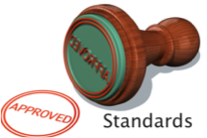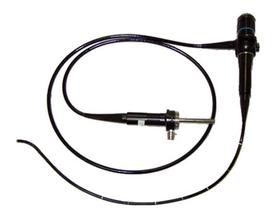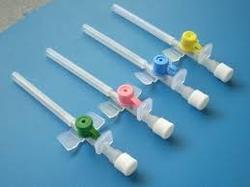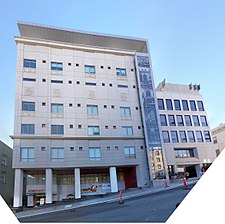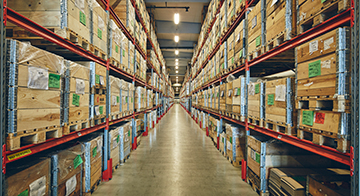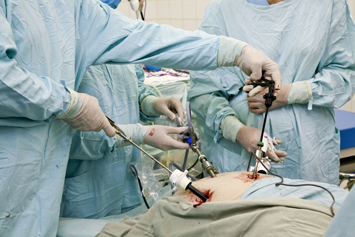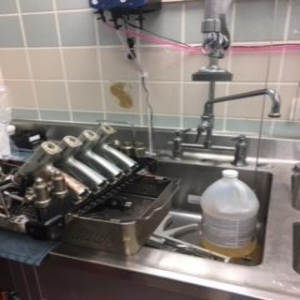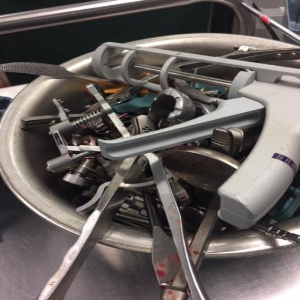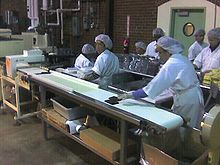Take The Quiz To Learn About Medical Devices & Surgical Instruments
(129).jpg)
We welcome you to take this quiz to learn more about medical devices and surgical instruments. There are different instruments and devices used by a surgeon or medical practitioner during surgery. Knowledge of how to use these is very important, as using the wrong one may lead to unwanted accidents in the operating room. Test your knowledge of these instruments and devices by taking the simple quiz below. There's no time bar on the quiz, so feel free to take it up as often as you want. Good luck!
- 1.
Central Service departments across the globe provide different services but are all expected to have the same standard.
- A.
True
- B.
False
Correct Answer
A. TrueExplanation
Central Service resource for standards and regulations are AAMI, OSHA, FDA and Joint Commission, just to name a few. This will be discussed in greater depth, later.Rate this question:
-
- 2.
All are types of endoscopes except one.
- A.
Bronchoscope introduced into the body through the mouth to see the Trachea and bronchi of the lungs.
- B.
Colposcope introduced into the body through the ear to see the brain.
- C.
Cystoscope introduced into the body through the urethra to see the inside of the bladder.
- D.
Laparoscope introduced into the body through a opening in the abdomen to see the stomach, liver or other abdominal organs.
Correct Answer
B. Colposcope introduced into the body through the ear to see the brain.Explanation
A colposcope is not typically introduced into the body through the ear to observe the brain. A colposcope is a medical device primarily used in gynecology for the examination of the cervix, vulva, and vagina. It involves visualizing these structures by directing the colposcope through the vaginal opening.Rate this question:
-
- 3.
What instruments/ tools used during minimally invasive procedures?
- A.
Chisels, t-handle and screws.
- B.
Mallet, osteotomes and drills.
- C.
Cannula using lasers, endoscopes or laprascopes.
- D.
None of the above
Correct Answer
C. Cannula using lasers, endoscopes or laprascopes.Explanation
A trocar is a pen-shaped instrument with a sharp triangular point at one end, typically used inside a hollow tube, known as a cannula or sleeve, to create an opening into the body through which the sleeve may be introduced, to provide an access port during surgery. Endoscopes are used in medicine to look inside the body. The endoscopy procedure uses an endoscope to examine the interior of a hollow organ or cavity of the body. Wikipedia. Laparoscopy is an operation performed in the abdomen or pelvis through small incisions with the aid of a camera. The laparoscope aids diagnosis or therapeutic interventions with a few small cuts in the abdomen. WikipediaRate this question:
-
- 4.
The process of __________ involves the complete removal of all microbial life, including bacterial spores, from medical devices and surgical instruments to ensure they are safe for use in sterile procedures.
Correct Answer
Sterilization, sterilizationExplanation
Sterilization is the highest level of microbial control and is essential for medical devices and surgical instruments used in invasive procedures. It ensures that no living microorganisms, including bacterial spores, remain on the instruments, preventing the risk of infection. This process is distinct from disinfection or cleaning, which may not eliminate all forms of microbial life.Rate this question:
- 5.
Proper techniques for cleaning are decisions made by CS techs in the Decontamination room all day everyday. CS techs must decide to:
- A.
Submerge items in water or not
- B.
Handwashing and put in mechanical washer
- C.
Handwash only
- D.
Decide what items are reusable or disposable
- E.
Decide which items to discard in the sharps container
- F.
Decide if items could go in the ultrasonic machine or not
Correct Answer(s)
A. Submerge items in water or not
B. Handwashing and put in mechanical washer
C. Handwash only
D. Decide what items are reusable or disposable
E. Decide which items to discard in the sharps container
F. Decide if items could go in the ultrasonic machine or notExplanation
CS techs must sort through thousands of piece of surgical instrument and devices during one eight hour shift.Rate this question:
-
- 6.
_________is the first step in the sterilization process.
Correct Answer(s)
CleaningExplanation
You can't sterilize something that is dirty. It is important for the sterilant or steam to make contact with all parts of the item and not be impeded by gross soil, oils etc.Rate this question:
- 7.
Surgical instruments are either single use or reprocessed?
- A.
True
- B.
False
Correct Answer
A. TrueExplanation
True. some surgical instruments like those with the Pakistan stamp are for single use, while stainless steel instruments from places like Germany are cleaned, inspected,sterilized and reused.Rate this question:
-
- 8.
Where are soiled, dirty medical devices and surgical instruments dropped off and clean and sterile medical devices and surgical instruments are picked up?
- A.
Central Service
- B.
The O.R.
- C.
Material Management
- D.
Shipping and receiving
Correct Answer
A. Central ServiceExplanation
Central Service is the correct answer because it is the department responsible for the cleaning, sterilization, and distribution of medical devices and surgical instruments in healthcare facilities. Soiled and dirty items are dropped off at Central Service for decontamination and cleaning, while clean and sterile items are picked up from Central Service for use in patient care. The other options (O.R., Material Management, Shipping and receiving) do not specifically deal with the cleaning and sterilization of medical devices and surgical instruments.Rate this question:
-
- 9.
Other names for Central Service.
- A.
Central Service
- B.
Central Community
- C.
Sterile Processing
- D.
Central Supply
Correct Answer(s)
A. Central Service
C. Sterile Processing
D. Central SupplyExplanation
The correct answer is Central Service, Sterile Processing, Central Supply. These are alternative names used to refer to the same department or function within a healthcare facility. Central Service is responsible for the cleaning, sterilization, and distribution of medical supplies and instruments. Sterile Processing focuses specifically on ensuring that instruments and equipment are properly sterilized. Central Supply refers to the department responsible for managing and distributing medical supplies throughout the facility.Rate this question:
-
- 10.
What are the benefits of minimally invasive surgeries?
- A.
Anesthesia is never used
- B.
Quick recover, small incisions, less hospital time, less anesthesia and less trauma.
- C.
It can be done by a nurse instead of a doctor.
- D.
The surgery usually last 30-45 minutes.
Correct Answer
B. Quick recover, small incisions, less hospital time, less anesthesia and less trauma.Explanation
Minimally invasive surgeries offer several benefits compared to traditional open surgeries. These include quicker recovery times, smaller incisions, reduced hospital stays, decreased anesthesia requirements, and less trauma to the body. These advantages make minimally invasive surgeries a preferred option for many patients as they result in less pain, scarring, and complications. Additionally, these surgeries can often be performed by a skilled nurse under the supervision of a doctor, further increasing accessibility and reducing costs.Rate this question:
-
- 11.
Used items begin their journey where in the CS department?
- A.
In the Decontamination room
- B.
Prep and Pack
Correct Answer
A. In the Decontamination roomExplanation
Technically once items are used in the O.R. they are suppose to be wiped down to remove gross soil, then transported to the decontamination room to be processed.Rate this question:
-
- 12.
Because of the growing need for reprocessing medical devices and surgical instruments the industry has responded by?
- A.
Buying more equipment and firing Central Service Technicians.
- B.
Limit the amount of procedures done daily.
- C.
Using disposable only medical devices and surgical instruments.
- D.
Outsourcing services, establishing satellite processing units with centralized management and creating a integrated delivery network that includes healthcare providers arrange for services that target a specific population.
Correct Answer
D. Outsourcing services, establishing satellite processing units with centralized management and creating a integrated delivery network that includes healthcare providers arrange for services that target a specific population.Explanation
The correct answer is outsourcing services, establishing satellite processing units with centralized management and creating an integrated delivery network that includes healthcare providers arrange for services that target a specific population. This response explains how the industry has responded to the growing need for reprocessing medical devices and surgical instruments. Instead of buying more equipment and firing Central Service Technicians, limiting procedures, or using disposable only devices, the industry has chosen to outsource services and establish satellite processing units. This allows for centralized management and the creation of an integrated delivery network that specifically targets a certain population.Rate this question:
-
- 13.
In the Decontamination room items are put through?
- A.
Examination
- B.
The cart washer
- C.
A chemical and physical process
- D.
The sonic
Correct Answer
C. A chemical and physical processExplanation
In the decontamination room, items undergo a chemical and physical process. This process involves the use of chemicals and physical methods to remove any contaminants or pathogens from the items. It may include cleaning, disinfecting, and sterilizing the items to ensure they are safe and free from any harmful substances. This process is essential in maintaining a clean and sterile environment, especially in medical or laboratory settings where contamination can have serious consequences.Rate this question:
-
- 14.
Why centralize Central Service?
- A.
Lunch breaks are easier to manage and control.
- B.
Management can keep a eye on staff.
- C.
Maximize people, equipment and utilities. Get more done in a shorter time
- D.
None of the above
Correct Answer
A. Lunch breaks are easier to manage and control.Explanation
Centralizing central service can help in managing and controlling lunch breaks more effectively. By having a centralized location, management can easily monitor and regulate the timing and duration of lunch breaks for staff. This ensures that everyone takes their breaks at the designated time, preventing any disruptions or delays in work. Additionally, centralization allows for better utilization of resources such as people, equipment, and utilities, leading to increased productivity and efficiency.Rate this question:
-
- 15.
Central Service does not branch out to clinics, ambulatory surgery centers, doctor's offices and other facilities that are away from the facilities main location.
- A.
True
- B.
False
Correct Answer
B. FalseExplanation
Central Service primary focus is the O.R. however they may process instruments and devices from Labor and Deliver, Anesthesia , respiratory, etc.Rate this question:
-
- 16.
Decontamination involves a physical (manual cleaning) and chemical process (enzymatic solution, thermal disinfection or high level disinfection).
- A.
True
- B.
False
Correct Answer
A. TrueExplanation
Decontamination is a process that involves both physical and chemical methods to remove or kill harmful microorganisms. Manual cleaning is a physical method that involves physically removing dirt, debris, and microorganisms from surfaces. Chemical methods, such as the use of enzymatic solutions, thermal disinfection, or high-level disinfection, are used to further eliminate or neutralize any remaining microorganisms. Therefore, the statement that decontamination involves both physical and chemical processes is true.Rate this question:
-
Quiz Review Timeline +
Our quizzes are rigorously reviewed, monitored and continuously updated by our expert board to maintain accuracy, relevance, and timeliness.
-
Current Version
-
Aug 15, 2024Quiz Edited by
ProProfs Editorial Team -
Apr 23, 2018Quiz Created by
Eyeonspd
 Back to top
Back to top



